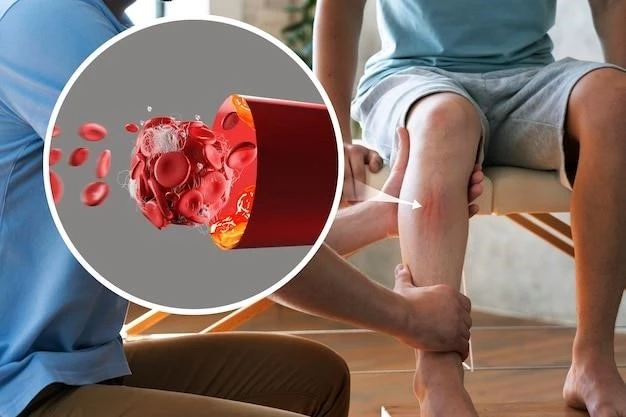Introduction to Pseudoachondroplastic Dysplasia 1
Pseudoachondroplastic dysplasia (COMP-PSACH) is characterized by normal length at birth and normal facies․ Typically‚ growth rate falls below standard curve‚ leading to short-limb short stature․
Pseudoachondroplastic dysplasia‚ also known as COMP-PSACH‚ is a rare bone disorder characterized by short stature‚ limb abnormalities‚ joint pain‚ and early-onset osteoarthritis․ It affects approximately 1 in 30‚000 individuals and is caused by mutations in the COMP gene․ The condition presents with normal facial features but results in significantly reduced height compared to peers‚ often becoming evident around age two with a waddling gait․ Understanding the genetic basis and clinical features of pseudoachondroplasia is crucial for diagnosis‚ management‚ and genetic counseling․
Causes and Genetic Basis
Pseudoachondroplastic dysplasia is primarily caused by mutations in the COMP gene‚ leading to skeletal growth inhibition predominantly in the limbs․
Mutation in the COMP Gene
Pseudoachondroplastic dysplasia is primarily caused by mutations in the COMP gene‚ impacting bone growth and leading to the characteristic features of the condition․ Understanding this genetic basis is crucial for diagnosis and potential treatment strategies․
Overview of the Condition
COMP-related pseudoachondroplasia (COMP-PSACH) is a rare bone disorder characterized by short stature‚ limb abnormalities‚ joint pain‚ and early-onset osteoarthritis․ It affects approximately 1 in 30‚000 individuals and is primarily caused by mutations in the COMP gene․
Symptoms and Signs
Pseudoachondroplastic dysplasia presents with a waddling gait‚ short-limb short stature‚ joint pain‚ and early-onset osteoarthritis as key symptoms․ Identification of these clinical signs is essential for early diagnosis and intervention․
Diagnostic Methods
Diagnosing pseudoachondroplastic dysplasia involves physical examinations‚ imaging studies like X-rays and genetic testing․ Identifying characteristic skeletal abnormalities and genetic mutations is crucial for confirming the diagnosis accurately․
Epidemiology and Prevalence
Pseudoachondroplastic dysplasia affects about 1 in 30‚000 individuals and is considered a rare bone disorder․
Rarity of the Disease
Pseudoachondroplastic dysplasia is considered a rare bone disorder‚ affecting approximately 1 in 30‚000 individuals globally․
Distinction from Other Skeletal Dysplasias
Pseudoachondroplastic dysplasia differs from other skeletal dysplasias like acromesomelic dysplasia due to its characteristic features and genetic basis․
Comparison with Achondroplasia
Pseudoachondroplastic dysplasia differs from achondroplasia‚ the most common form of skeletal dysplasia‚ in its characteristic features and genetic causation․
Management and Treatment
Effective management of pseudoachondroplastic dysplasia involves therapeutic approaches focused on alleviating joint pain‚ enhancing mobility‚ and providing psychological support․
Therapeutic Approaches
Treatment for pseudoachondroplastic dysplasia involves managing joint pain‚ improving mobility‚ and providing emotional support․ Physical therapy and orthopedic interventions play a crucial role in enhancing quality of life for individuals with this condition․
Impact on Growth and Development
Pseudoachondroplastic dysplasia affects stature and limb growth‚ leading to challenges in mobility and joint health․
Effects on Stature and Limb Growth
Pseudoachondroplastic dysplasia impacts stature and limb growth‚ posing challenges in mobility‚ joint health‚ and overall physical development․
Prognosis and Long-Term Outlook
Understanding the long-term outlook of pseudoachondroplastic dysplasia is essential for managing challenges in growth and development․
Lifespan and Quality of Life Considerations
Understanding the impact of pseudoachondroplastic dysplasia on lifespan and quality of life is crucial for individuals and families affected by this condition․
Research and Scientific Advances
Keeping abreast of current studies and findings in pseudoachondroplastic dysplasia research is crucial for advancing understanding and potential treatment strategies․
Current Studies and Discoveries
Ongoing research on pseudoachondroplastic dysplasia aims to uncover new findings regarding its genetic mechanisms‚ better diagnostic approaches‚ and potential therapeutic interventions․
Genetic Counseling and Family Planning
Individuals and families affected by pseudoachondroplastic dysplasia can benefit from genetic counseling for better understanding and family planning decisions․
Guidance for Individuals and Families
Individuals and families impacted by pseudoachondroplastic dysplasia can benefit from genetic counseling to understand the condition’s inheritance pattern‚ potential risks‚ and available family planning options․

Support Resources for Patients
Accessing organizations and communities can provide valuable support and resources for individuals affected by pseudoachondroplastic dysplasia․
Organizations and Communities
Patients with pseudoachondroplastic dysplasia can find support and resources through dedicated organizations and communities specializing in rare bone disorders․
Pseudoachondroplastic dysplasia may lead to joint issues and osteoarthritis‚ impacting the individuals’ mobility and overall quality of life․
Complications and Associated Conditions
Joint issues like osteoarthritis are common complications of pseudoachondroplastic dysplasia‚ affecting mobility and overall well-being․
Patients with pseudoachondroplastic dysplasia may require surgical interventions and orthopedic care to manage skeletal abnormalities effectively․
Surgical Interventions and Orthopedic Care
Surgical interventions and orthopedic care play a critical role in managing skeletal abnormalities associated with pseudoachondroplastic dysplasia․
Coping Strategies and Psychological Support
Emphasizing emotional well-being and mental health is vital for individuals navigating pseudoachondroplastic dysplasia challenges․
Emotional Well-being and Mental Health Considerations
Emphasizing emotional well-being and mental health support is crucial for individuals navigating challenges associated with pseudoachondroplastic dysplasia․

Conclusion and Future Directions
Summarizing the key points of pseudoachondroplastic dysplasia is vital for guiding future research and improving management strategies․
Summary of Key Points
Pseudoachondroplastic dysplasia‚ characterized by short-limb short stature and joint issues‚ requires comprehensive management strategies for enhanced quality of life․
